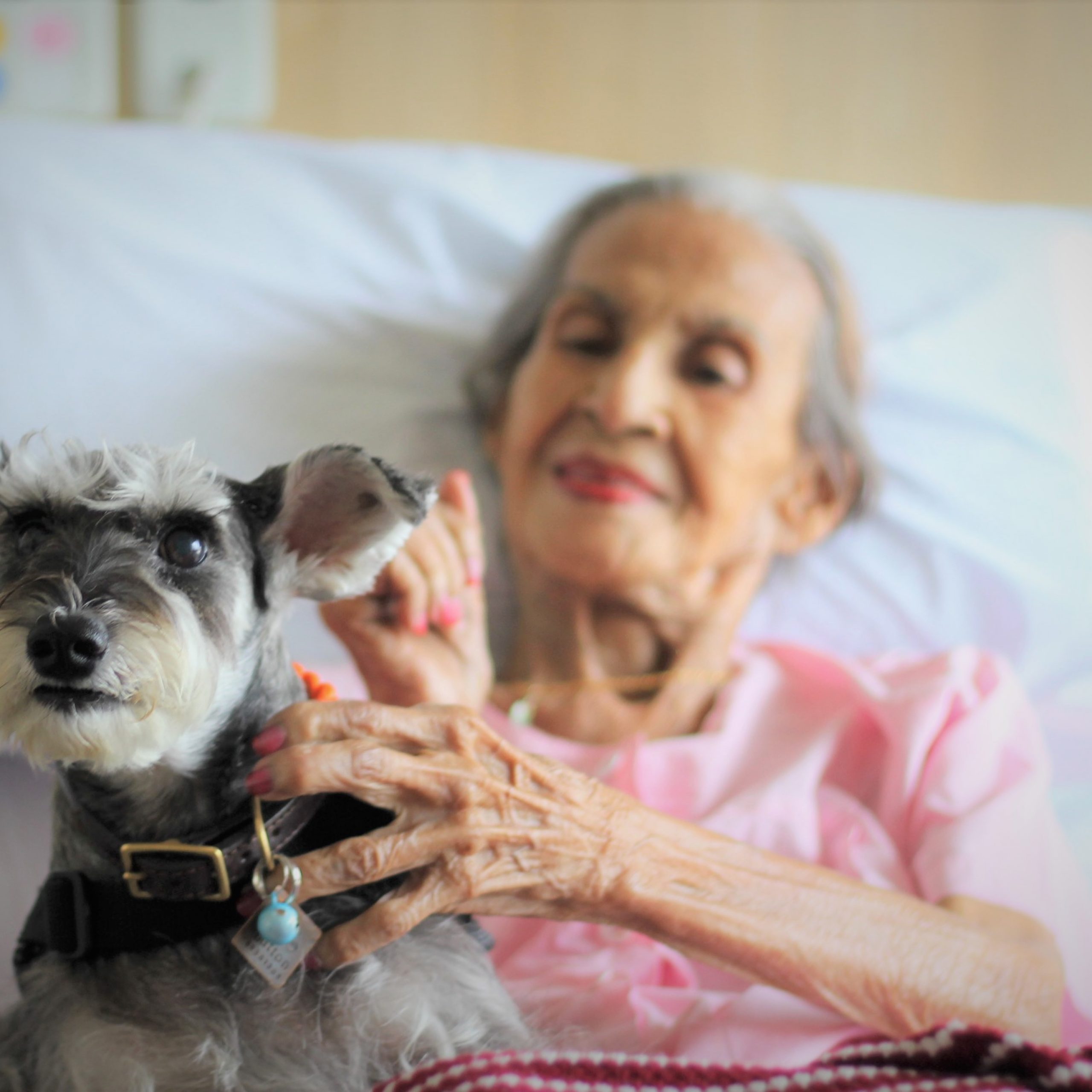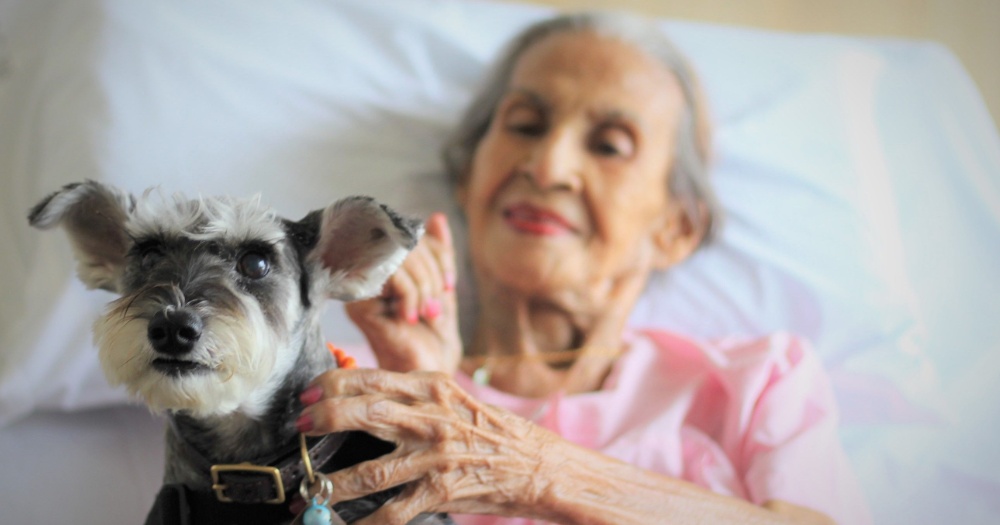Button: The Hokkien Therapy Dog describes the story of an abandoned dog, Button, who was adopted and subsequently trained as a therapy pet who understands fluent Hokkien. Button spent her days visiting hospice patients and bringing joy to them, before passing away in 2018.
The author, Fiona Foo, founded Hope Dog Rescue in July 2011, and had a terrible fear of dogs while growing up. Her first dog, Popsicle, helped her overcome that fear, and she now spends her time saving stray and abandoned dogs, fostering them and working to find forever homes for them.
Button: The Hokkien Therapy Dog is published by Epigram Books and you can get a copy here.
An excerpt from the book is reproduced here.
By Fiona Foo
I have long been intrigued by how animals can heal a person’s soul, motivate someone to get better or help them become a better person.
Deep in my heart, I’d wanted a pet therapy dog because I enjoyed working with young children and old folks.
I’d imagine how my very own pet therapy dog could play an integral part in brightening up someone else’s day, other than just mine.
Button became Singapore's first therapy dog that is fluent in Hokkien
I got a glimpse of this when I started taking Popsicle and Snapple to school, where I ran childcare centres. I worked with mainstream and special needs children.
As time went on, I spent more and more days reading up on what it took to have an animal-assisted therapy dog: the assessments, the different types of clients that we could choose to work with, the route to becoming one.
As I read, deep down in my heart, I knew Button would ace everything.
 Image via Michel Damaris.
Image via Michel Damaris.
After more than six months of training her at home, getting her used to wheelchairs, falling walking sticks, loud screaming (something patients with dementia might do), I felt she was ready to be assessed.
In fact, I was so confident that she would ace the assessment that I ordered her a therapy dog vest from the United States before she even passed.
Little did I know that she would one day be so famous and so photographed in her pink vest.
We signed up for the therapy dog assessment and she indeed passed with flying colours to become Singapore’s first animal-assisted therapy dog, assessed in full Hokkien.
Many hospice residents looked forward to Button's visits
In 2017, my close friend, Jennifer, connected me with Assisi Hospice, whose in-house therapy dog was old and on the verge of retiring.
Jennifer had told a senior staff member there about Button’s easy-going nature and her affinity with humans, and they were interested.
We wrote in and they accepted our application. That was how Button came to be the resident therapy dog at Assisi Hospice.
We visited about two to three times each month, usually on alternate Tuesdays, and each time we stayed for about two hours or so.
It was meant to be an hour per session, but we often had requests from the patients who wanted to meet Button or who had been waiting for her for the past week.
We couldn’t find it in our hearts to say no to such requests. Besides, these were “end of life” patients; what if they weren’t here during our next visit?
So we always obliged and stayed longer than we planned. Button didn’t mind doing overtime at all; she was always eager to please her patients.
Most of the residents were familiar with Button and anticipated her visits. It gave them something to look forward to other than the drudgery of waiting for death.
 Image via Michel Damaris.
Image via Michel Damaris.
Soon Button became a pro at her “job” and each time I put her pink “therapy dog” vest on her, she knew she was going to zo kang (work).
I could feel her sense of pride and, of course, to say that I was proud of her would be an understatement.
She knew her way around the hospice like the back of her paw. She could go from the car park to the lift, where we went straight to the top floor. We worked our way down to the ground floor, ending with the day-care patients.
Some days she saw more patients; on quieter days, the patients might be too sick or too tired to meet her. On average, she saw seven to ten patients per visit.
There were those who initially did not want to see her
There were, of course, people who didn’t like dogs. Or perhaps they were too depressed or upset to see us.
They shouted at us when we entered their rooms or demanded that we go away. We respected their wishes but their rejection wasn’t carved in stone.
The next time we went to the hospice, we would still try. Again they scolded us and asked us to go away and again we would keep trying.
Sometimes when we entered, we’d hear, “Eh, why you bring dog into my room?” “But you said you wanted to see the dog?” “No! I thought you ask me if I want to eat hot dog. Go out! Go out!”
Apparently these were the hard-of-hearing residents. There was this old man who refused to talk or pat Button despite the nurse’s encouragement.
He was unresponsive and would curl up his fingers when the nurse held his hand to pat Button.
But we continued to work with him at every visit. Eventually he stopped curling his fingers when we took his hand. Later still, he willingly gave us his hand when we visited.
After almost two months, he smiled when we held his hand to stroke Button. We were all elated, beaming at Button’s success. It was quite a memorable moment, and even the doctor was dancing with joy!
Some days we stayed longer than we planned and although Button was tired, I knew she wouldn’t mind.
Many times, as we were leaving, a staff member would run up to us and say so-and-so patient in Room 123 wanted to see Button because they had been in another therapy session; could Button come back?
Of course we were happy to! Button seemed to know her presence was needed and off she went, trotting proudly to the ward.
What impressed me most was she instinctively knew how to behave and what was expected of her at work. It seemed as if she was born for this job.
 Image via Fiona Foo.
Image via Fiona Foo.
Dogs do not judge people
Of course, therapy dogs are not a medical cure-all. I believe, however, that the intangible benefits they bring to a patient’s well-being cannot be scientifically explained.
Animal-assisted therapy can help break certain barriers or boundaries where other methods may fall short.
For one, dogs do not judge so people feel more at ease with them. Studies have also shown how stroking or patting a pet can bring a sense of relief or calmness in many people.
For me, I was just proud of my little Button. I was proud of how an older rescue dog like her could achieve so much, bringing so much joy and a sense of cheer to the people around her.
I was deeply honoured she’d chosen me to walk this journey with her and humbled at how much we’d achieved in such a short span of time.
We deliver more stories to you on LinkedIn
Have an interesting perspective to share or a commentary to contribute? Write to us at [email protected].
Top image via Michel Damaris.
If you like what you read, follow us on Facebook, Instagram, Twitter and Telegram to get the latest updates.
